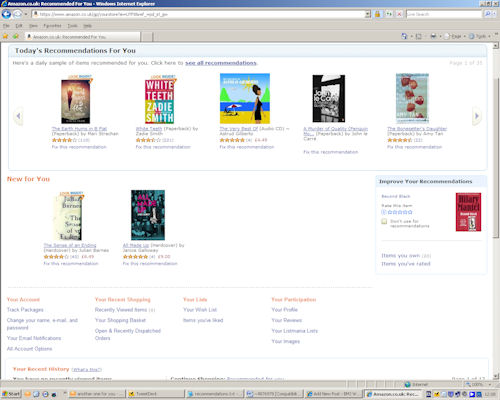“Readers who liked this also liked this”: online recommendations and scholarly publishing
30 Sep, 11 | by BMJ
“Hello David Payne. We have recommendations for you.” Think of online recommendations and Amazon springs to mind. The store that started with books, launched the Kindle e-reader, and is now the Internet’s answer to John Lewis, is widely credited with getting recommendations right, based on what I and other customers have bought.
I see the logic behind their suggestions. Amazon is currently suggesting I buy 17 books. But does it work for scholarly publishers?
Not as well, seems to be the consensus. I’ve twice attended HighWire publisher meetings (Highwire hosts both the BMJ and its stable of 42 specialist journals) where the conference agenda has included sessions from organisations that piloted recommendation services.
At last week’s conference in Washington, one publisher talked about the pros and cons of its pilot, which ran on 100 journals. The click through rate so far is tiny – only 0.24%, although readers who do click through report that they are spending more time browsing articles. The publisher hasn’t promoted the service much, so it may fare better with some marketing behind it.
But why so low? Readers seem to want recommendation services that not only straddle more than one journal, but also more than one publisher. This is great feedback, but how would publishers feel about promoting journal articles that will take readers away from their own journal sites?
Recommendation services get better the longer they run for, so the pilot may get better results over time. Another issue for scholarly publishers is that many institutional users access content from a shared computer. So if a diabetologist in a library clicks on three articles, but a psychiatrist chooses another three when he sits at the same terminal fifteen minutes later, the recommendations will look pretty odd.
The conference was told it’s important how you promote the recommended articles. Don’t over-promise, otherwise you will set unrealistic expectations. Mindful of the constraints, is it wildly inaccurate to title a box showing recommendations as: “Readers who liked this also liked these?” How about: “Other articles you may be interested in?”
For a while BMJ articles had a “See also” link which pulled in articles using our site’s taxonomy, Semio. This was the “watered down” term. Originally it had said: “Related content.” But some colleagues felt this slightly over-sold the content that was being displayed. Anyway, we abandoned it because we felt some of the suggestions were counter-intuitive, even though this was generating lots of click-throughs, certainly more than 0.24%.
Despite what we know so far, there is still something attractive about recommendations from a publisher perspective. Get it right, and you can reduce the bounce rate on your journal (this is the percentage of users who leave your site after visiting only one page), remind readers that you have lots of content they may be interested in, and boost the number of page impressions on your site.
If the BMJ and BMJ Journals offered this service, would you use it?
David Payne is editor, bmj.com
